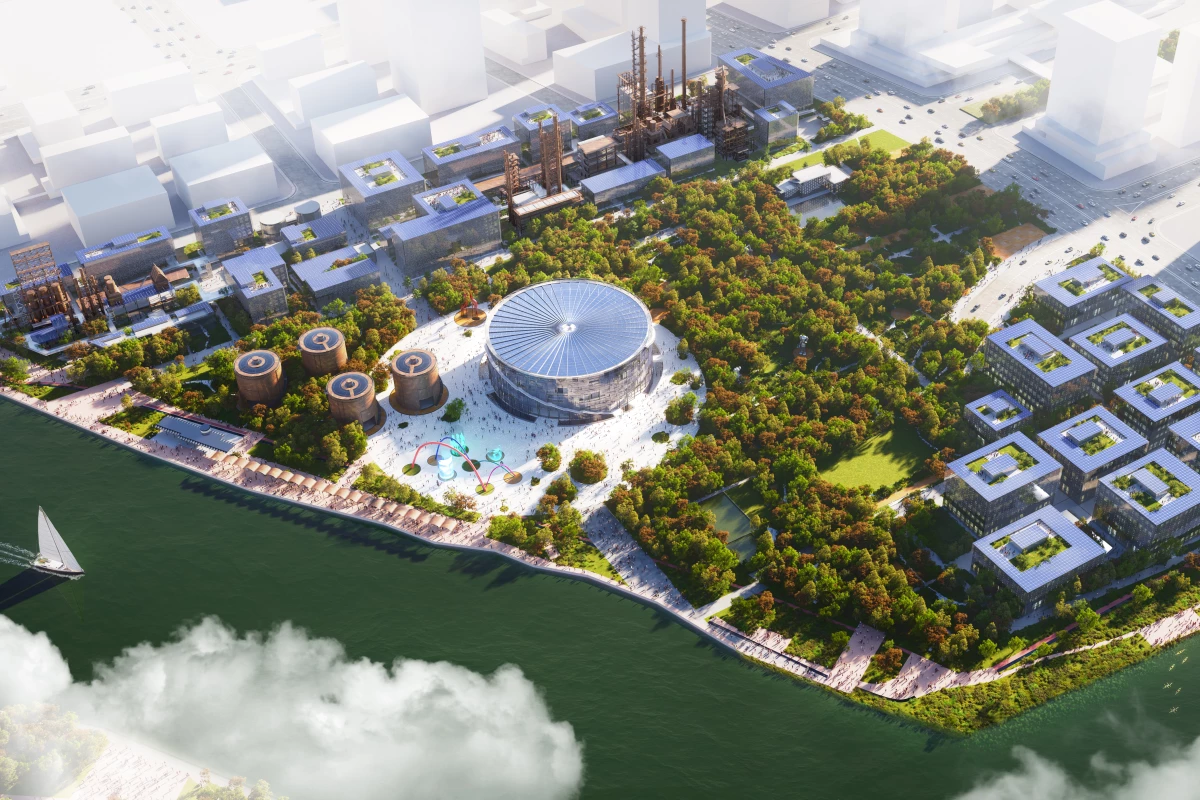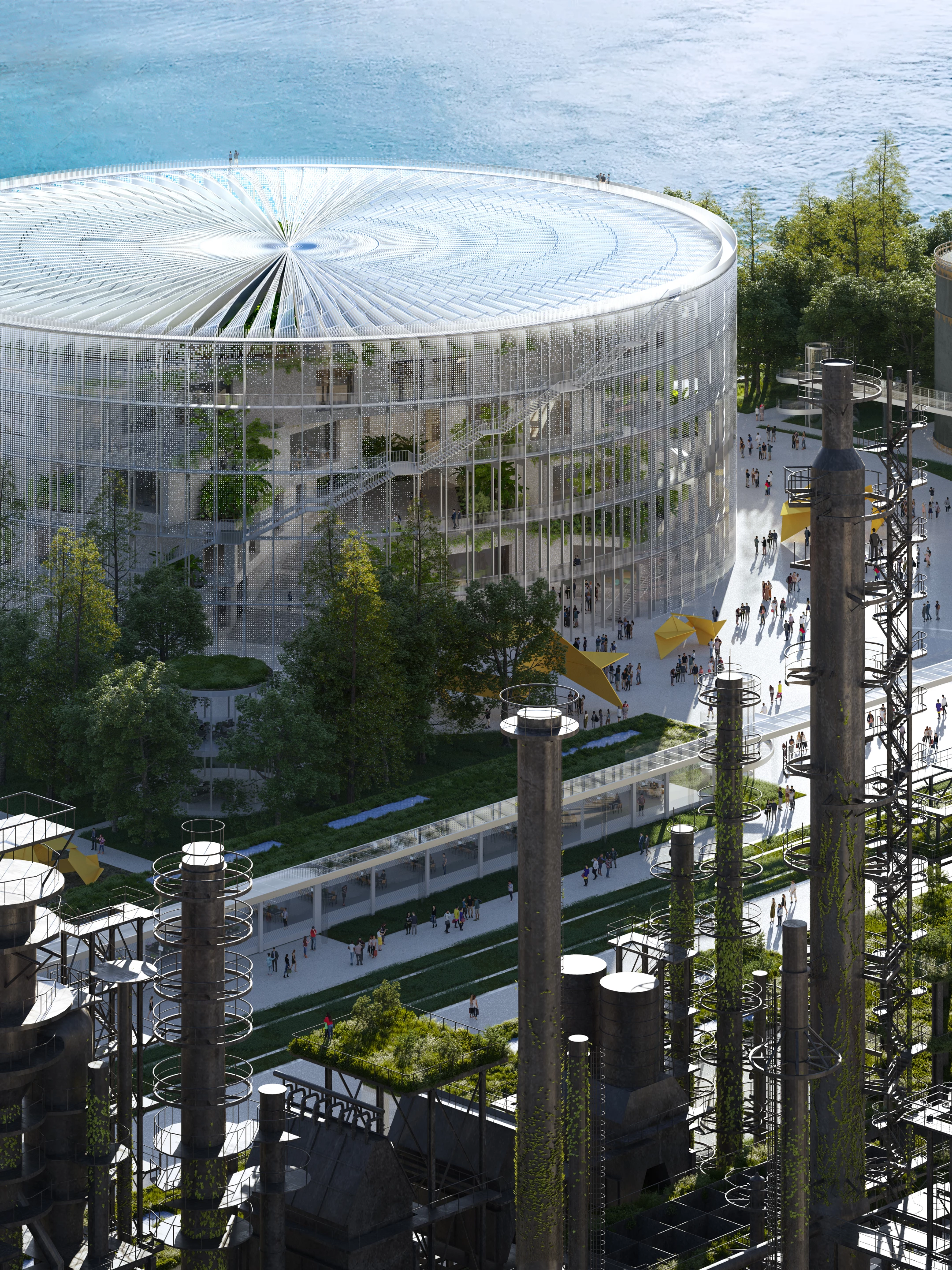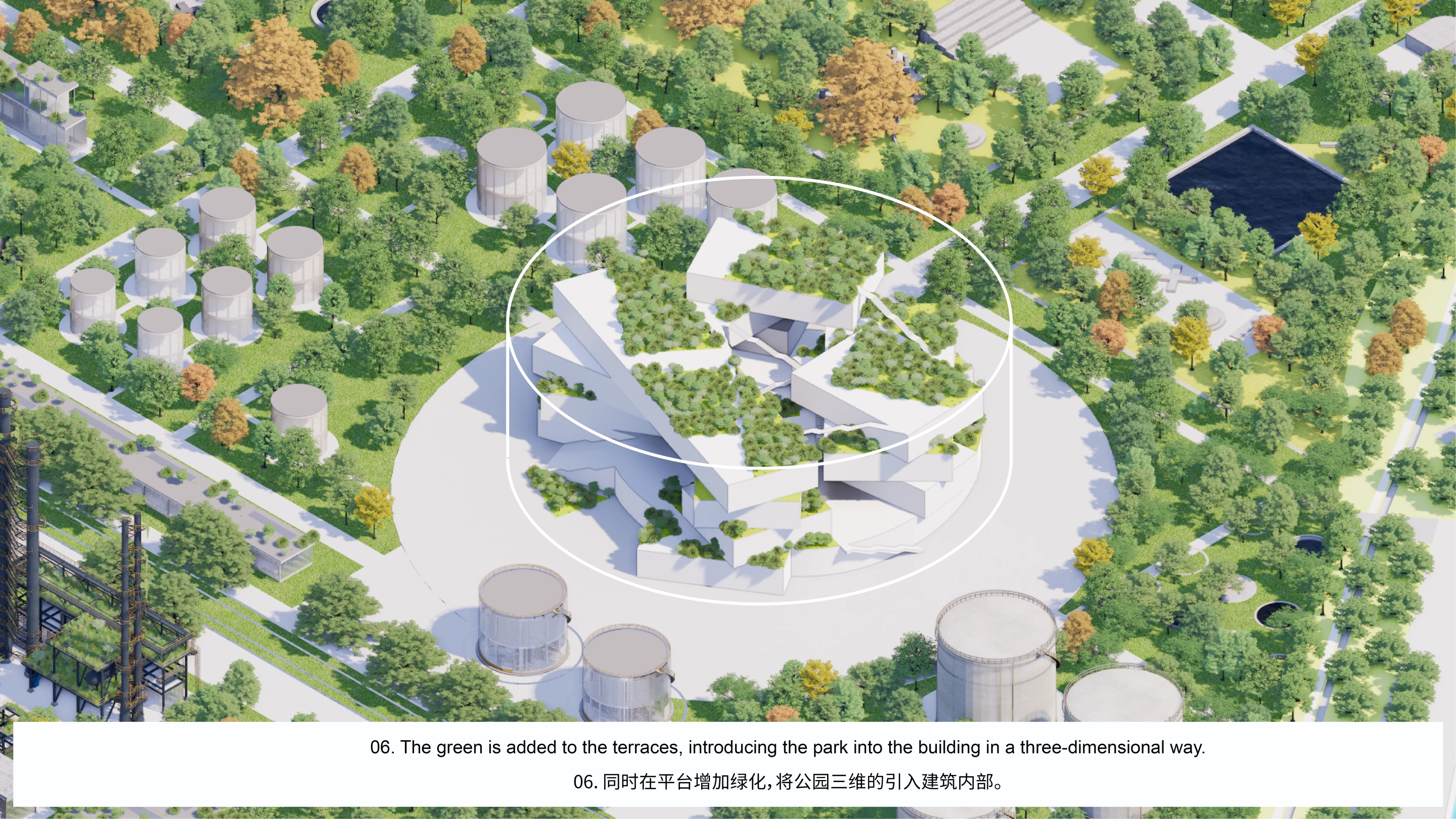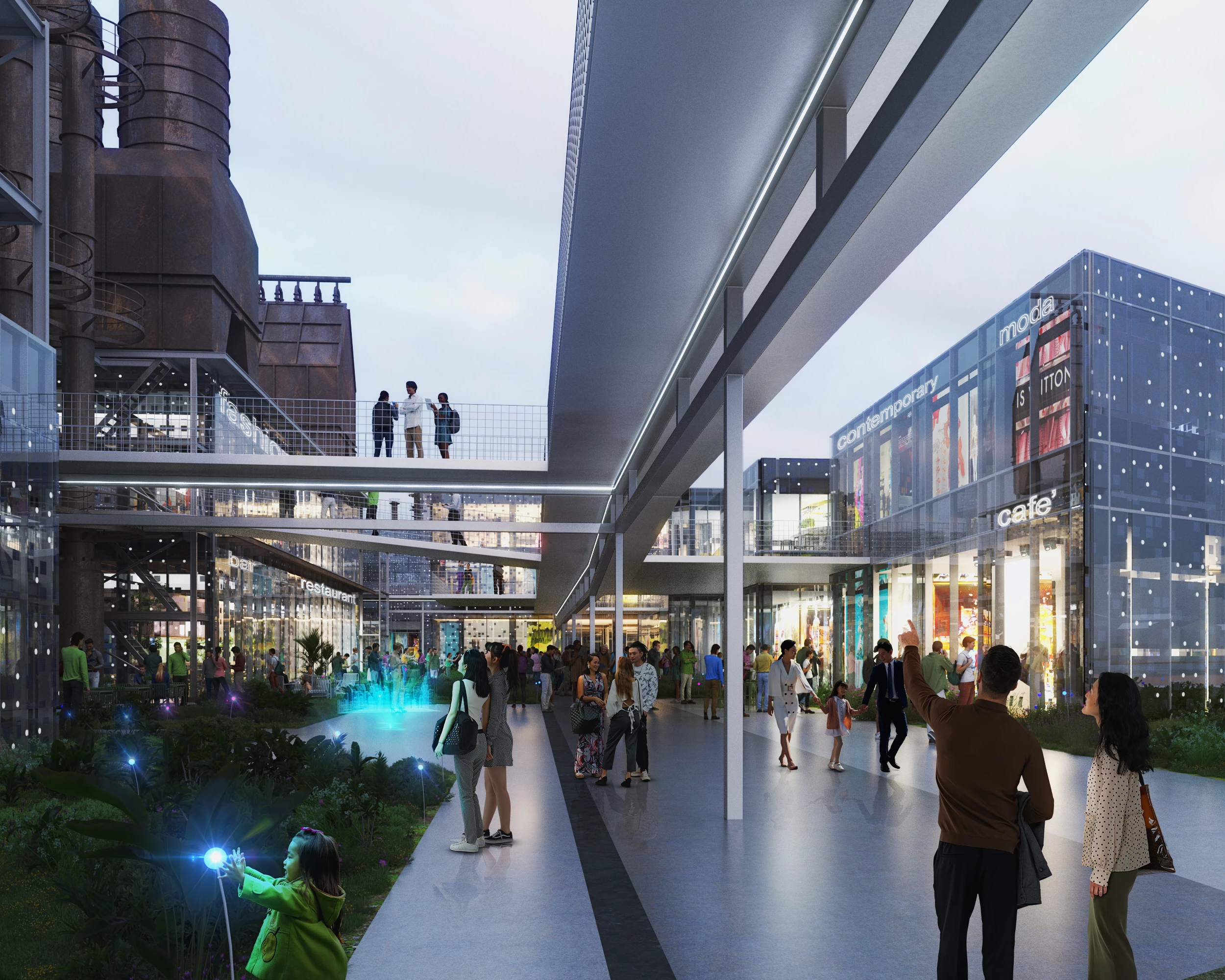As society continues to transition away from fossil fuel use, what should we do with all the old infrastructure that's left behind? MVRDV offers one possible answer with this upcoming project in China, which will transform a former oil refinery into a mixed-use development that produces more power than it needs using impressive green technology.
The Hangzhou Oil Refinery Factory Park is situated next to China's Grand Canal and forms part of a larger push by the Chinese government to repurpose many of the industrial areas next to the waterfront into social amenities. The site is spread over roughly 18 hectares (45 acres) and will include retail space, offices, and art spaces.
A lot of the structures that once occupied the refinery have been demolished already, though some larger buildings and oil storage drums still remain. MVRDV, in collaboration with landscaper Openfabric, aims to retain the larger buildings while reconstructing smaller silos into immersive art experiences and quirky retail kiosks. The whole thing will be centered around a new museum that takes the form of an oversized glass oil silo and will be partly covered in LEDs, creating a dynamic facade that can change color or advertise the events taking place inside.
"The centerpiece of the park is the Art and Sci-tech Centre, a new museum which, with its cylindrical exterior, is imagined as a vastly scaled-up version of the silos which once peppered the site," explained MVRDV. "The simple form of the exterior conceals a highly complex interior: atop a circular exhibition hall that is partially buried below ground level, an off-kilter stack of long, rectangular boxes house artists' studios, offices, and commercial spaces. The tops of the boxes form a series of terraces, connected by stairs and bridges, that serve to enliven this public area within the museum, enabling performances, large-scale installations, or events."

The Hangzhou Oil Refinery Factory Park's sustainability is ambitious. The outer facade of the new museum will be permeable, allowing breezes to penetrate the structure and naturally heat and cool it, reducing the energy required to maintain a comfortable temperature.
The facade will also incorporate thousands of small "photovoltaic spots" (essentially small solar panels) to generate power from sunlight. These spots are being installed with solar exposure, prevailing winds, and views in mind. Other structures on the site will be built with glass and make use of the same photovoltaic system too. According to MVRDV, all this will mean that the park will contribute more power to the grid than it uses, however no hard figures are available at this early date. In addition, the park will feature lots of new plants and trees, as well as green roofs.
The Hangzhou Oil Refinery Factory Park has been commissioned following an international architecture competition, though we've no word yet on when it's expected to be completed.
Source: MVRDV










